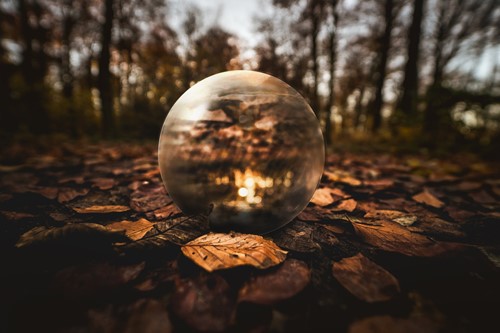
Environmental art became popular in the late 20th century because of growing concern and awareness for the environment. Environmental art has several overlapping characteristics as land art or earthworks, but comments or establishes an opinion on environmental issues. As artists continue to think about the environment as a cohesive system rather than a living space, the appeal and spread of environmental art continues. Here are the basic elements of environmental art to help gain a better understanding of the term.
Environmental artists try to establish their relationship with the natural world in several ways. One way is through bringing their creative workspaces out of the studio and into the environment. This challenges the static concept of a specific place for creating art and instead allows a more integrated relationship with a variety of settings.
Environmental art is all about working with nature instead of against it. Artists who create environmental art take special care in their processes and material usage in order to minimize damage to the surroundings. The health and wellbeing of the environment takes precedence over the artistic process, which also means environmental art is vulnerable to the same changes (such as erosion, flooding and decay).
Besides natural settings, environmental artists use natural materials in creating art. Common examples include sticks and branches, stone, gravel, sand, flowers and leaves. The goal of environmental art is to encourage the viewer to look at the natural environment differently through art. Ultimately, the idea is to create a greater awareness of small but important details of the natural world and our effect on them.
Taking its cue from land art, environmental art exists outside of the commercialized art world. While you may find environmental art in urban areas, you won’t find it in a museum or art gallery. This creates an enhanced accessibility for viewers and allows them to participate in art even if they have never considered or been able to visit an established institution before. A lot of environmental art means to send a message as activism and this denial of the more traditional art world factors into that by giving ownership of the art to nature rather than gallery owners and other organizations.
As science advances and environmental awareness grows, so does the power and popularity of environmental art. Artists who want to send a message about the importance of humanity’s relationship with the natural world can do so in a variety of ways through art. While environmental art exists in many facets and forms, these key elements are the most important in understanding the term.

欢迎来到 Garden State Realty LLC,一家值得信赖的精品房地产经纪公司,位于新泽西州利文斯顿,致力于为来自世界各地的客户提供优质服务。凭借对房地产行业的热情和卓越的成功记录,我们赢得了卓越、专业以及独特个性化服务的良好声誉,使我们在行业中脱颖而出。
我们服务的核心在于优秀房地产专业人士的关键特质:坚定不移的诚信、深入的市场专业知识、创新的营销策略、娴熟的谈判技巧以及广泛的高质量专业网络。这些品质是我们业务的基础,确保每位客户都能获得卓越的成果。
我们致力于提供顶级服务,通过将您的需求置于首位,积极倾听、清晰沟通,并迅速响应您的每个需求。不论您是买房、卖房还是投资,您都可以信赖我们作为可靠的合作伙伴,全程陪伴您左右。欢迎加入我们的客户群体,在这里,您的目标就是我们的使命。